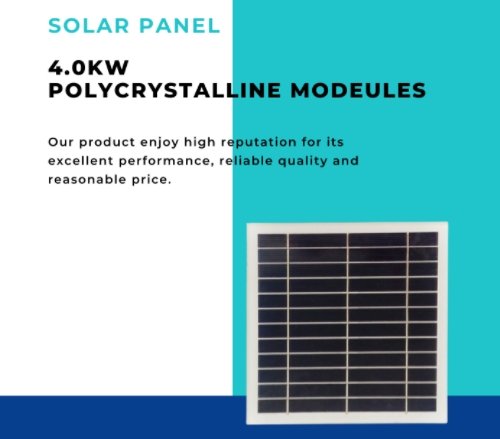
What is a polycrystalline solar panels?
PV cells that are made from polycrystalline or multi-crystalline silicon are called polycrystalline or multi-crystalline solar panels. Polycrystalline solar panels are made from wafers formed by melting silicon fragments together. A polycrystalline solar panel is cooled directly by the molten silicon in the vat used to make it. There is a mosaic-like pattern on the surface of these solar panels. They are made up of several polycrystalline silicon crystals and have a square shape and a blue hue. In polycrystalline panels, electrons can hardly move inside the cells since there are multiple silicon crystals in each one. Electricity is generated by these solar panels by absorbing solar energy.
Polycrystalline solar panels’ working principle
Multiple photovoltaic cells make up these solar panels. The silicon crystals inside each cell make it function as a semiconductor. In PN junctions (junctions between N-type and P-type materials), sunlight imparts energy to electrons so that they can flow as electricity. Here, P-type materials are deficient in electrons while N-type materials have an abundance of electrons. Two electrodes are connected to the PV cells. The electrode on the top surface contains small wires while the electrode on the bottom is a foil-like conductor.
4.0kw high-efficiency Polycrystalline solar panels Characteristics:
- High-efficiency crystalline silicon solar cells
- High transmission low iron tempered glass, strong mechanical resistance
- Standard waterproof junction box, with bypass diode
- High endurance to different atrocious weather
- Custom-designed modules according to clients’ requirements.

